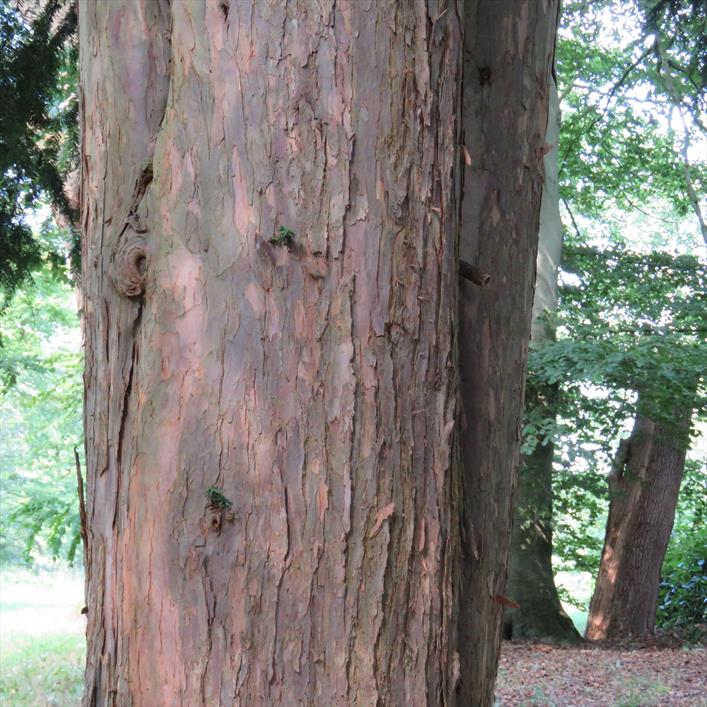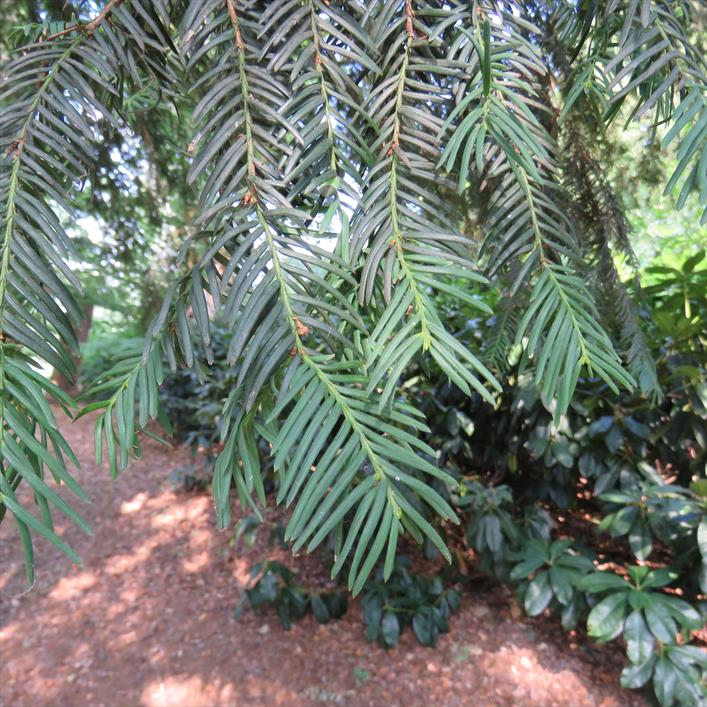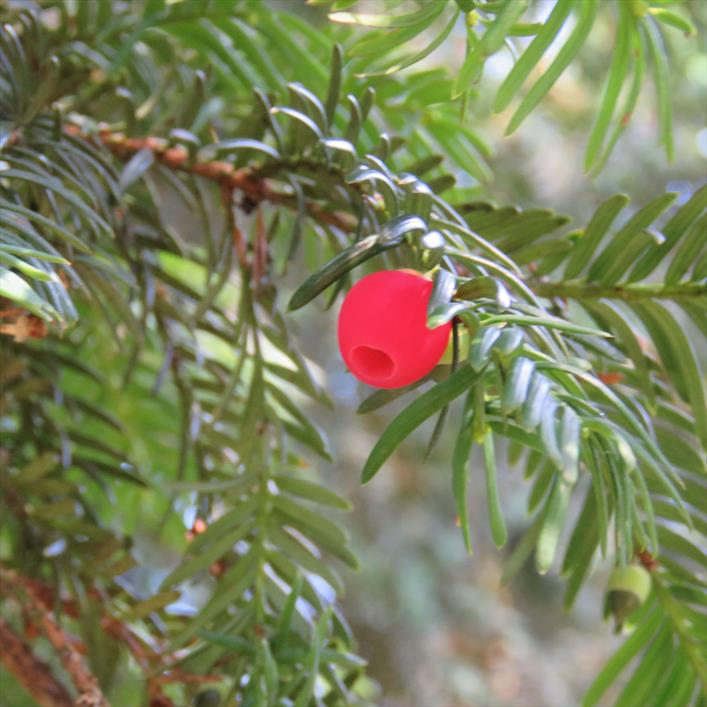Yew
Taxus baccata
Yew family (Taxaceae)
Old and dangerous
Yews are perhaps the oldest trees in Europe. These evergreen conifers, with the female trees bearing bright red ‘fruit’, can become very old indeed. Some yew trees are known to be over 2,000 years old. This slow-growing conifer also appears in many ancient myths and legends.
In Dutch the common name for the yew is venijnboom or ‘danger tree’ – an apt name for sure. The flexible wood was widely used in Medieval times to make lethal bows, and the poison in the seeds can be fatal to humans and animals. That said, there are many positive applications of the yew such as the poison, ‘taxol’, found in the needles is used in cures for cancer.
The yew is often found in parks but it the Netherlands it naturally occurs along streams and rivers in Limburg and Achterhoek.
Present in:
Hortus Botanicus AmsterdamHortus Alkmaar
Historische Tuin Aalsmeer
Hortus botanicus Leiden
Botanische Tuinen Universiteit Utrecht
Landgoed Schovenhorst
Botanische Tuin Arboretum Oudenbosch
Hortus Nijmegen
Hortus botanicus Haren / Groningen
Arboretum Poort Bulten
Nederlands Openluchtmuseum
ARTIS
Themes
Crown jewel in the Holland Open Air Museum and on the Twickel Estate.
The seeds, leaves and bark are highly poisonous and can be fatal to humans and livestock.
In the mid 1960s, scientists showed that the taxane alkaloids in yew bark could be used to treat cancer and the anticancer drug Taxol® was approved for use in the 1990s.
The aril is a fleshy, cup-like structure partially enveloping the seeds; these 'false fruits' are eaten by birds and so disperse the seeds.
Taxus baccata has a long association with English culture, not least because its wood was used for making bows. The yew longbow is famous for being the English weapon of victory at the Battle of Agincourt in 1415.
Yews are consistently found in churchyards around Britain and some of these trees are reputedly over 2000 years old, suggesting that yew may have had some sacred significance in pre-Christian Britain.
Taxus baccata is a densely branching evergreen that can live for centuries.
Since Taxus baccata tolerates pruning well, this plant is very suitable as a hedging plant. Furniture makers favour working with this wood. It is used for making longbows and handles of tools. When burned it releases a pleasant aroma.
Details
| Description: | Conifer, up to 18 m. |
|---|---|
| Distributions: | Europe, western asia and north africa. |
| Habitat: | Oak and beech woodland, often on chalk or limestone substrates. |
| Year cycle: | Perennial (polycarpic evergreen) |
| Hardiness: | -4 - 5 f (hardy - very cold winter) |
| Flowering period: | Maart - april |
| Fruiting period: | September - november |
| Fruit color: | Red |
| Notes on fruits: | The mature seeds are surrounded by a cup-shaped, fleshy, scarlet red or sometimes yellow aril. |
| At its best: | September - november |




